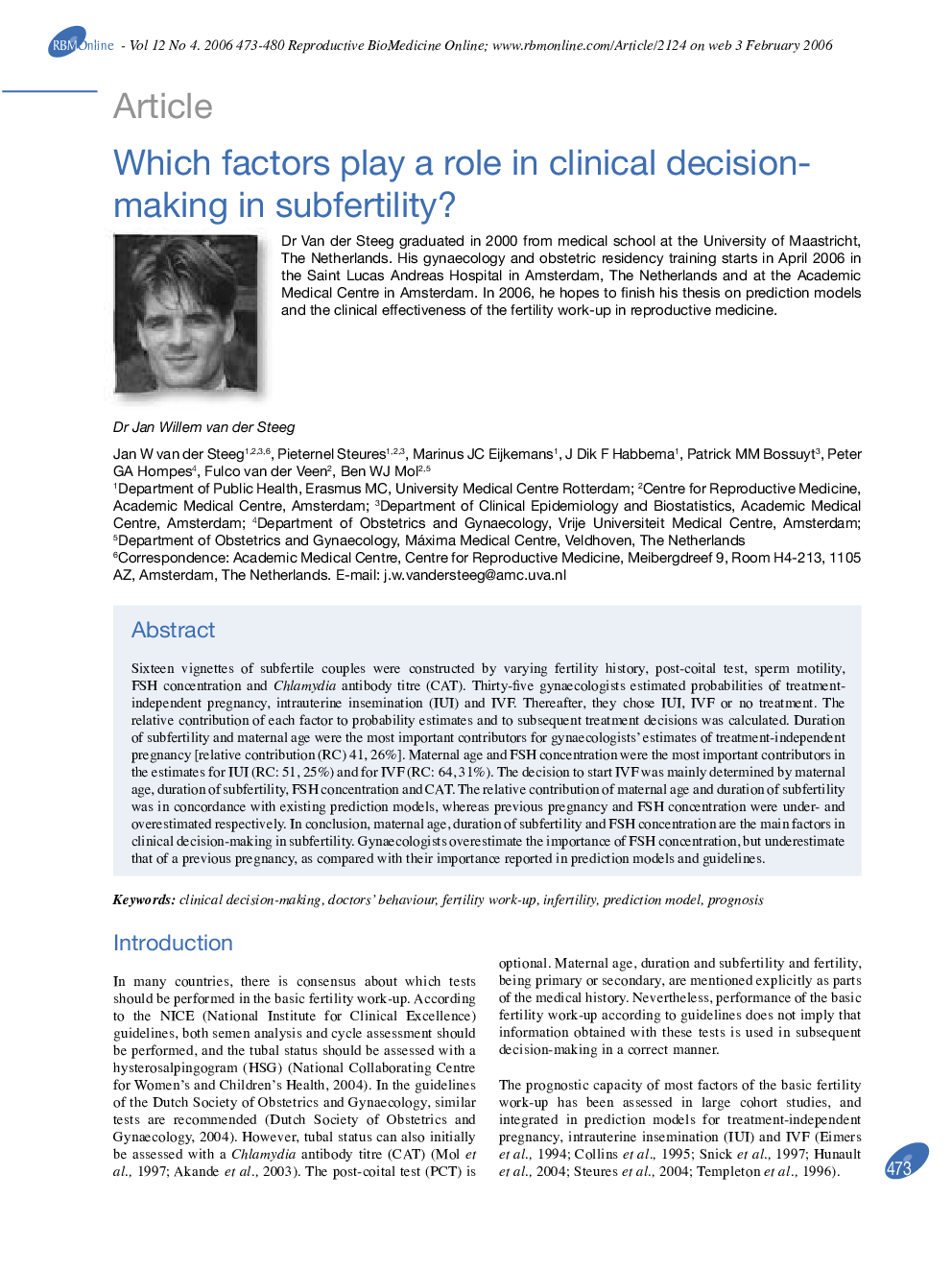| کد مقاله | کد نشریه | سال انتشار | مقاله انگلیسی | نسخه تمام متن |
|---|---|---|---|---|
| 3973523 | 1256860 | 2006 | 8 صفحه PDF | دانلود رایگان |

Sixteen vignettes of subfertile couples were constructed by varying fertility history, post-coital test, sperm motility, FSH concentration and Chlamydia antibody titre (CAT). Thirty-five gynaecologists estimated probabilities of treatment-independent pregnancy, intrauterine insemination (IUI) and IVF. Thereafter, they chose IUI, IVF or no treatment. The relative contribution of each factor to probability estimates and to subsequent treatment decisions was calculated. Duration of subfertility and maternal age were the most important contributors for gynaecologists’ estimates of treatment-independent pregnancy [relative contribution (RC) 41, 26%]. Maternal age and FSH concentration were the most important contributors in the estimates for IUI (RC: 51, 25%) and for IVF (RC: 64, 31%). The decision to start IVF was mainly determined by maternal age, duration of subfertility, FSH concentration and CAT. The relative contribution of maternal age and duration of subfertility was in concordance with existing prediction models, whereas previous pregnancy and FSH concentration were under- and overestimated respectively. In conclusion, maternal age, duration of subfertility and FSH concentration are the main factors in clinical decision-making in subfertility. Gynaecologists overestimate the importance of FSH concentration, but underestimate that of a previous pregnancy, as compared with their importance reported in prediction models and guidelines.
Journal: Reproductive BioMedicine Online - Volume 12, Issue 4, 2006, Pages 473-480